5G Launch in India and Its Impact on the Internet of Things

5G Launch in India and Its Impact on the Internet of Things
With the introduction of 5G services, India is prepared to up the ante in the digital transformation game. On October 1, 2022, at the sixth India Mobile Congress in New Delhi, Prime Minister Narendra Modi introduced 5G services in India, heralding the arrival of instant connectivity.
More than 98% of internet users are anticipated to profit from implementing these services. All the major telecom companies, including the chairman of Reliance, Mukesh Ambani, the head of the Aditya Birla Group, Kumar Mangalam Birla, and the chairman of Bharti Enterprises, Sunil Bharti Mittal, are quite hopeful about this development. With a capacity bigger than 4G LTE, the fifth-generation wireless technology will provide connectivity with faster speeds and lower latency. IoT, AI, AR/VR, and private LTE will benefit from 5G, which will unintentionally boost industrial 4.0. IoT service providers will be able to provide users with a more seamless experience.
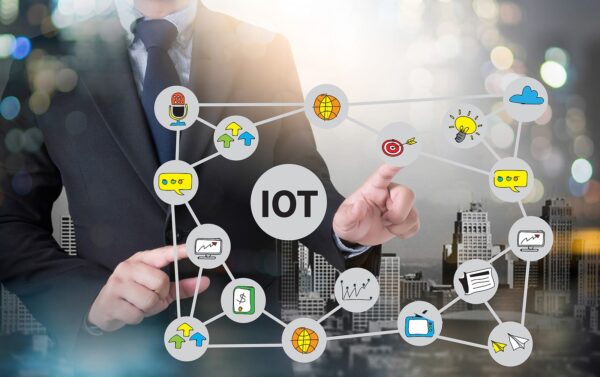
Internet of Things (IoT)
The Internet of Things (IoT) is a network of interconnected computing devices, mechanical and digital equipment, products, animals, or people who may exchange data over a network without needing to interact with other people or computers.
Things include individuals with implanted heart monitors, agricultural animals with biochip transponders, cars with integrated tyre pressure monitoring, and other instances that can be given an Internet Protocol (IP) address and communicate data across a network.
IoT is being used more and more by businesses across a variety of industries to improve operations, better understand their customers, deliver better customer service, speed up decision-making, and increase the company’s value.
How does IoT work?
The Internet of Things (IoT) ecosystem comprises web-enabled smart devices that use embedded systems, like processors, sensors, and communication gear, to gather, send, and act on the data they get from their surroundings. By connecting to an IoT gateway or other edge device, which either sends data to the cloud for analysis or analyses it locally, IoT devices exchange the sensor data they collect. These gadgets occasionally converse with other similar devices, acting on the data they exchange. Even though people can engage with the devices to set them up, give them instructions, or retrieve data, the gadgets accomplish the majority of the job without their help.
These web-enabled devices’ connectivity, networking, and communication protocols are heavily influenced by the IoT applications implemented.
IoT can employ machine learning and artificial intelligence (AI) to help make data collection processes simpler and more dynamic.
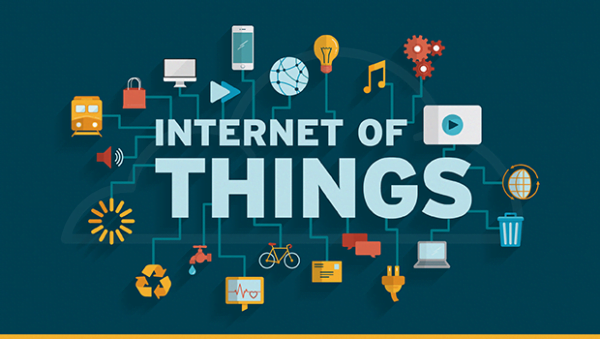
Why is IoT important?
People that use the internet of things can lead more intelligent lives, do jobs more effectively, and have complete control over their destiny. In addition to offering smart home automation devices, IoT is essential for business. IoT enables businesses to monitor the real-time performance of their systems, providing insights into anything from equipment performance to supply chain and logistics operations.
IoT enables businesses to automate processes and reduce labour costs. Additionally, it lowers the cost of manufacturing and shipping goods, improves service delivery, reduces waste, and offers transparency in consumer transactions.
As a result, IoT is some of the most major technologies of modern life, and it will gain momentum as more businesses recognize how linked gadgets can help them stay competitive.
What are the benefits of IoT to organizations?
The internet of things provides many benefits to enterprises. Some benefits are unique to specific businesses, while others apply to many other industries. Some of the common benefits of IoT help businesses to:
- Monitor their overall business processes
- Improve the customer experience
- Save time and money
- Enhance employee productivity
- Integrate and adapt business models
- Make better business decisions
- Generate more revenue.
IoT equips organizations with the resources they need to help their business strategies and challenges them to reevaluate how they conduct their operations.
However, it has found use cases for agriculture, infrastructure, and home automation organizations, leading some organizations toward digital transformation. IoT is most prevalent in manufacturing, transportation, and utility organizations, using sensors and other IoT devices.
The use of IoT in agriculture can help farmers by simplifying their work. Sensors can gather information on soil composition, temperature, humidity, rainfall, and other variables that would aid in automating farming practices.
IoT can assist with the capacity to monitor infrastructure-related operations. For example, sensors could be used to track developments or changes in the structural elements of buildings, bridges, and other infrastructure. Benefits of this include cost savings, time savings, changes to the workflow’s quality of life, and a paperless workflow.
A home automation company can use IoT to control and monitor a building’s electrical and mechanical systems. On a larger scale, smart cities can assist residents in using less garbage and energy.
IoT has an impact on every business, including those in healthcare, banking, retail, and manufacturing.
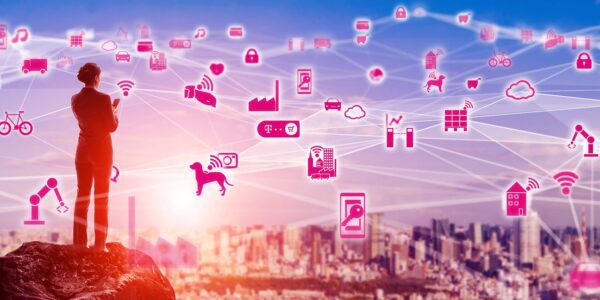
What are the pros and cons of IoT?
IoT has several advantages, some of which are listed below:
- Availability of information on any device, at any time, from anywhere;
- Enhanced communication between electronic devices connected to one another;
- Saving time and money by sending data packets across a network connection;
- Task automation lessens the need for human intervention while improving the quality of a company’s services.
Some disadvantages of IoT include the following:
- As more devices are connected and more information is shared between them, there is a greater chance that a hacker will steal sensitive data.
- It’s conceivable that every linked device will become corrupted if there is a problem in the system.
- Since there is no global IoT interoperability standard, it is challenging for devices from many manufacturers to connect with one another.
In accordance with projections, by 2025, there will be 25 billion IoT connections, with a $1.1 trillion global IoT revenue. Investing more in the development of IoT and 5G will be a smart move in light of India’s ambition to have a $5 trillion economy by 2025. The efficient adoption of 5G and IoT in mobility, healthcare, manufacturing, and retail could increase the world GDP by $1.2 to $2 trillion by the end of 2030, which could have a $1 trillion impact on India by the year 2035, according to McKinsey.
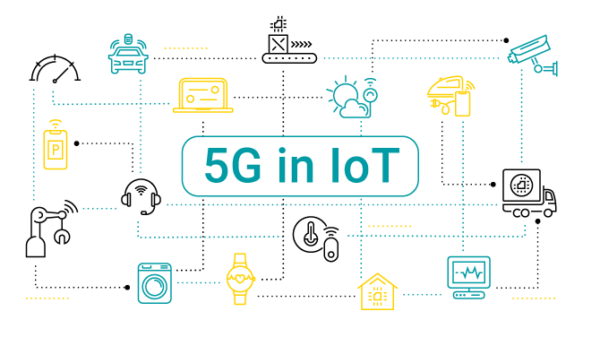
IoT After 5G
By 2025, there will be 41.6 billion Internet of Things (IoT) devices, according to International Data Corporation (IDC) predictions. This increase in usage signals that 5G services should be introduced in India as the demand for these services will necessitate wireless connections with higher reliability, ultra-low latency, high network capacity, and enhanced availability.
For the hassle-free operation of the IoT, 5G will provide reliable connections. The latency will be 10 times lower than 4G, dropping to as little as 1 millisecond. There will be no traffic in the digital domain thanks to the network hyper-densification that 5G networks have planned. A powerful processing system will be in place for 5G, which will guarantee optimized network energy utilization.
Data transfer through sensors will become increasingly effective. The threat of an inconsistent connection is one issue that arises when several devices are linked. This problem can be resolved mainly by 5G by combining its intricacies.
A major shift will be brought about by 5G in the world of large machinery. The Internet of Things (IoT) can be used to operate large machinery to improve employee safety and protection, mainly in dangerous areas. Additionally, it will make it possible for remote-operated machinery to be controlled more effectively.
With the arrival of 5G, the IoT is anticipated to revolutionize the medical sector. By fully utilizing technology, telesurgery and remote surgery will become commonplace. With a peak speed of 10 Gbps, it has the potential to revolutionize how the Internet of Things is controlled completely. Additionally, it can enter diagnostic systems, helping with quicker diagnoses and more accurate reporting.
The implementation of 5G will have a catalytic effect at a time when automated and autonomous vehicles are undergoing test drives. Beyond GPS and driving alone, the benefit of low latency and strong connectivity has a vast range of applications. It significantly lowers the likelihood of accidents and their risks. The special sensing and connection capabilities can identify and avoid any potential obstacles. It goes without saying that it has an unintended impact on traffic in general.
The fusion of 5G and the Internet of Things will alter how a typical home runs as far as the domestic sphere is concerned. They can be used efficiently for cooking and cleaning. Home robots and floor cleaners are already common purchases in upper-middle-class households. They will become smarter and more dependable thanks to 5G integration.
The quest for safety inside the home will be greatly enhanced by automated gates, cameras, and other security devices.
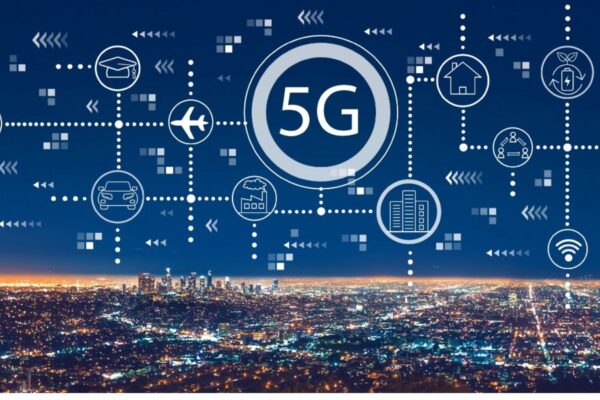
Things to Look Out for at the Advent Seamless Experiences
Immersive experiences, not just speed and smoothness, will be the focus of 5G. It has its own vulnerabilities and risks, which must be addressed simultaneously as the benefits are reaped. Data leakage risk is major since so many integrations are taking place at once. It is crucial to know who has access to your data and how it is utilized. This problem of data usage and storage has grown increasingly urgent when it comes to the medical sector.
Creating laws that will help the telecommunications sector and its users to use 5G technology and IoT safely is urgently required. The changes that exclusively come from the technology sphere may have profound effects on consumers. The recent debates over the data protection bill are a great effort in this direction. The Indian community can make the most of 5G and IoT in all spheres of life by holistically improving technology and awareness.
Conclusion
The intro of the 5G network, which will provide ten times the speed of the current networks, is anticipated to usher in a revolution. The IoT will be able to share and communicate data more quickly thanks to the enhanced speed, improving the productivity of many industries. The introduction of 5G in India will have a major positive impact on the economy.




